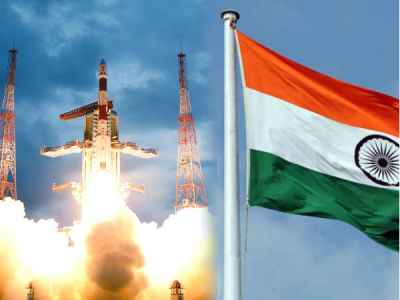Chandrayaan 2 Successfully Leaves Earth Orbit, Begins Journey To The Moon

After revolving around the earth for nearly 23 days since its launch from the space station at Srikarikota, Chandrayaan-2 has begun its journey to the moon, early morning on Wednesday.
The Indian Space Research Organisation (ISRO) confirmed that the mission module has successfully performed the crucial manoeuvre and left the earth’s orbit. If all goes as planned, Chandrayaan-2 would reach the moon’s orbit by August 20.
The final orbit raising manoeuvre was carried out at 2:21 am, when the scientist fired the spacecraft’s liquid engine for about 1203 seconds and put it in the Lunar Transfer trajectory, which would eventually cause it to arrive at the moon.
All the systems on-board the spacecraft are normal, confirmed the premier space agency which has been monitoring the health of the module continuously from the ISRO Telemetry, Tracking and Command Network (ISTRAC) in Bangalore with the support from Indian Deep Space Network (IDSN) antennas at Byalalu, near Bangalore.
India’s most challenging mission till date, Chandrayaan-2 was launched from Satish Dhawan Space Centre in Sriharikota on July 22 using the powerful Geostationary satellite launch vehicle (GSLV)-Mk-111 M-1. It carries an orbiter, Lander Vikram and Rover Pragyaan. While the orbiter would revolve around the moon for an year, Lander Vikram and Rover Pragyan have a lifespan of 14 days, after starting operations on the lunar surface.
The next manoeuvre would now be performed on August 20, when the spacecraft would approach the moon and its liquid engine will be fired again to insert the spacecraft into a lunar orbit. As per the plan, the module would be placed in an orbit which passes over the lunar poles at a distance of 100 kms from the moon’s surface. Four more orbit manoeuvre would be required to be performed for the purpose.
If all goes as planned, Vikram Lander would separate from the orbiter on September 2 when ISRO would begin its powered descent to make a soft landing on the lunar surface on September 7. It would be for the first time, that Indian scientists would attempt a soft landing on the moon, a feat achieved by only four nations so far namely US, Russia and China.



